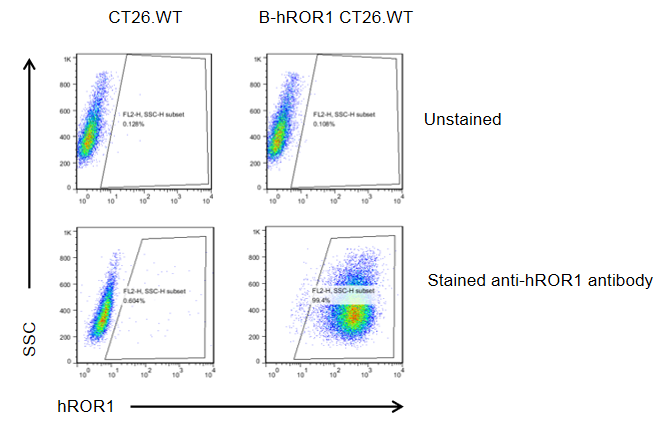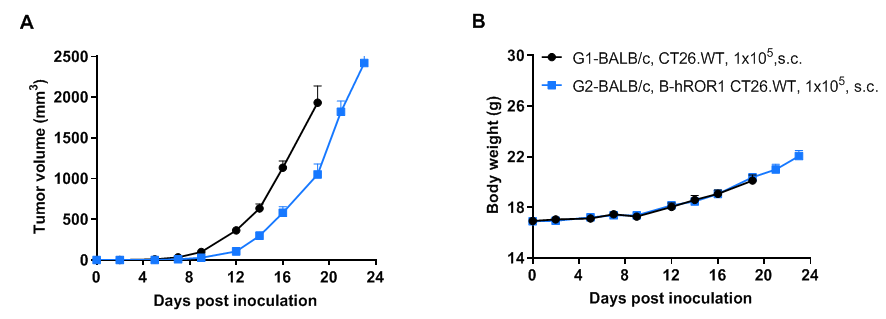


• 322263

| Product name | B-hROR1 CT26.WT |
|---|---|
| Catalog number | 322263 |
| Aliases | NTRKR1, dJ537F10.1 |
| Tissue | Colon |
| Disease | Colon carcinoma |
| Species | Mouse |
on this page
The mouse Ror1 gene was replaced by human ROR1 coding sequence in B-hROR1 CT26.WT cells. Human ROR1 is highly expressed on the surface of B-hROR1 CT26.WT cells.
Gene targeting strategy for B-hROR1 CT26.WT cells. The exogenous promoter and human ROR1 coding sequence was inserted to replace part of murine exon 3 and all of exon 4. The insertion disrupts the endogenous murine Ror1 gene, resulting in a non-functional transcript.

ROR1 expression analysis in B-hROR1 CT26.WT cells by flow cytometry. Single cell suspensions from wild-type CT26.WT and B-hROR1 CT26.WT cultures were stained with species-specific anti-ROR1 antibody. Human ROR1 was detected on the surface of B-hROR1 CT26.WT cells but not wild-type CT26.WT cells.

Subcutaneous tumor growth of B-hROR1 CT26.WT. B-hROR1 CT26.WT (1×105) and wild-type CT26.WT cells (1×105) were subcutaneously implanted into BALB/c mice (female, 7-week-old, n=6). Tumor volume and body weight were measured three times a week. (A) Average tumor volume. (B) Body weight. Volume was expressed in mm3 using the formula: V=0.5 × long diameter × short diameter2. Results indicate that B-hROR1 CT26.WT cells were able to establish tumors in vivo and can be used for efficacy studies. Values are expressed as mean ± SEM.